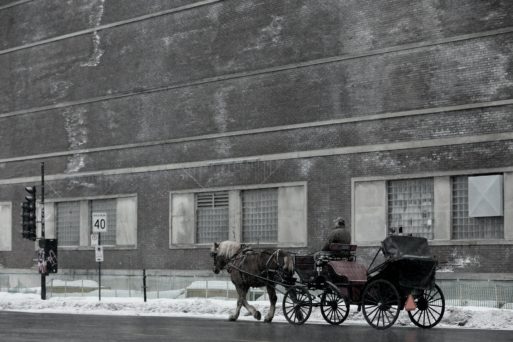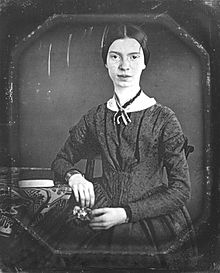 “Because I could not stop for death
“Because I could not stop for death
He kindly stopped for me
The carriage held but just ourselves
And immortality.”

Credit: en.wikipedia.org
Emily Dickinson, born in 1830, was in many ways a living contradiction. She was raised in a Calvinist, orthodox, conservative church. She spent one year at Mount Holyoke Female Seminary, but left because she was homesick. After that, she never darkened the door of a church again.
When Dickinson returned from her year in college, she rarely left her home and seldom accepted visitors. She did have two close friends. The first was Reverend Charles Wadsworth. She met him in Philadelphia on one of her rare trips. She referred to him as “my closest earthly friend.” Their friendship lasted until 1860. When it was over, Dickinson’s poems became more despondent. Her second close friend was Susan Gilbert, a great admirer of her poems and possibly her lover.
Although Emily Dickinson had few visitors, she frequently exchanged poetry and correspondence with friends and other poets. At one point, she sent some of her poetry to an editor. His response was not encouraging. Dickinson was devastated and did not publish any poetry during her lifetime.
Dickinson’s poetry was in the style of Charlotte Bronte and Elizabeth Barrett Browning. All three wrote from the perspective of a strong persona with a unique point of view. In “Because I Could Not Stop For Death,” for instance, Dickinson describes a leisurely ride in a carriage with death. She talks about passing a school and a beautiful house and finishes with:
“Since the ‘tis centuries, and yet each
Feel shorter than the day
I first surmised the horses’ heads
Were toward eternity.”

Credit: Watertown Daily Times/John Hart
Because Dickinson wrote so many poems, it is difficult to guess when this one was written. But it was probably after she developed a terminal illness. The line about death “kindly” stopping for her seems tongue-in-cheek. In spite of her unusual and sometimes sad life, Dickinson wrote nothing to suggest she was suicidal or ready to give up on living. The “immortality” in the carriage probably came from her Puritan background, which would have instilled in her the belief of an immortal soul.
Dickinson’s description of her ride with death is almost pleasant, like two friends going out for a buggy ride. Dickinson was not thrilled with the idea of dying — “Because I could not stop for death” — but the end of this poem leaves one feeling that she has made her peace with it.
After Dickinson’s death, her family found over 1800 poems in hand-sewn booklets. The first selection of poems which included, “Because I Could Not Stop For Death,” was published in 1890. The complete collection of her poems was not published until 1955.
For a woman who was too bashful to publish her poetry after one bad review, Emily Dickinson never did give up writing, although she did seem to give up the dream of having her work published. Her love of the art led her to write almost 2000 poems, many of them as she was dying of kidney disease.

 “Because I Could Not Stop For Death” by Emily Dickinson
“Because I Could Not Stop For Death” by Emily Dickinson


 Our Monthly Tip: Make an “In Case of Death” File to Ease Loved One’s Grief
Our Monthly Tip: Make an “In Case of Death” File to Ease Loved One’s Grief
 Passing of Beloved Comedian Births a New Comedy Festival
Passing of Beloved Comedian Births a New Comedy Festival















